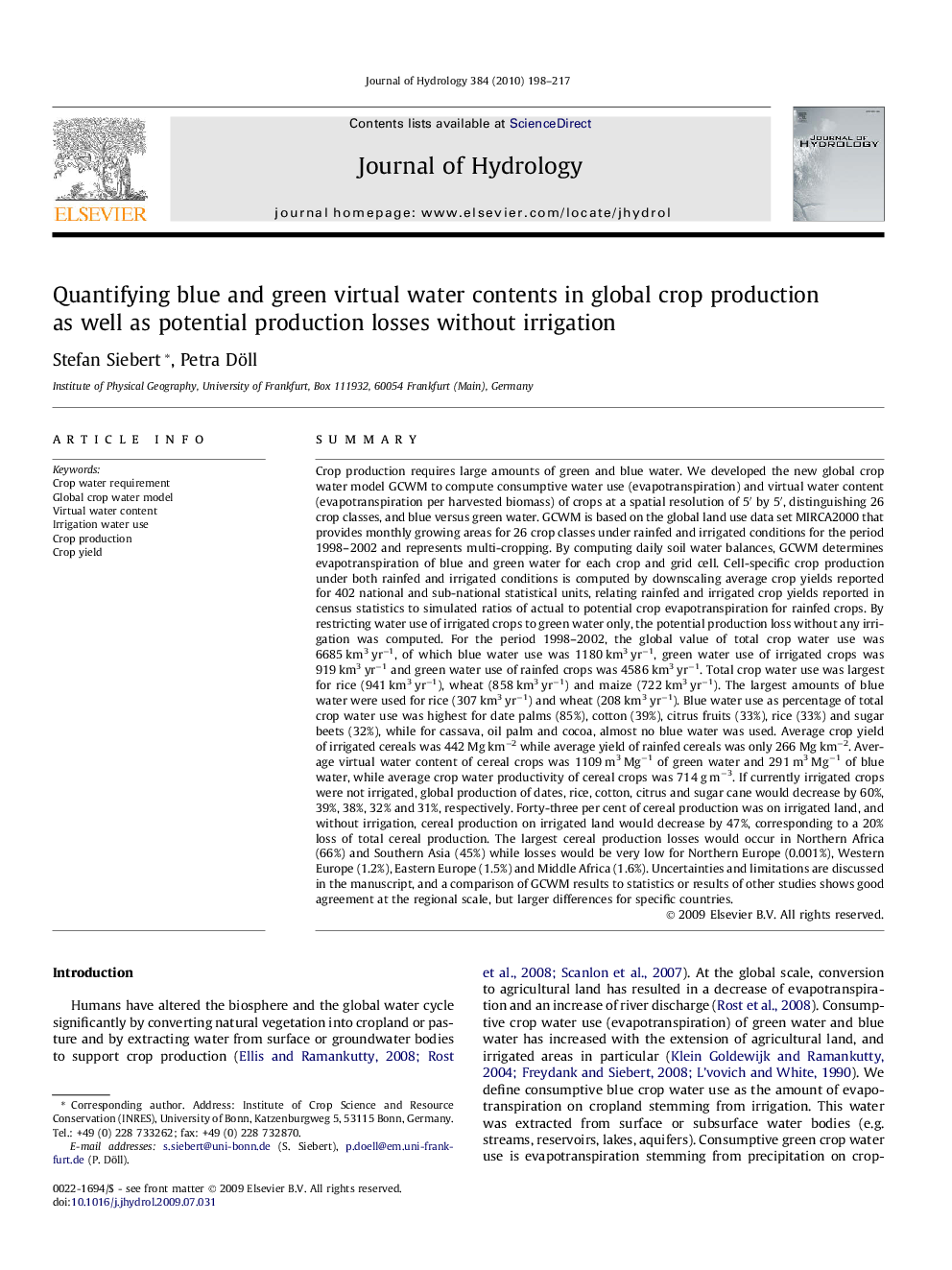| کد مقاله | کد نشریه | سال انتشار | مقاله انگلیسی | نسخه تمام متن |
|---|---|---|---|---|
| 4578313 | 1630057 | 2010 | 20 صفحه PDF | دانلود رایگان |

SummaryCrop production requires large amounts of green and blue water. We developed the new global crop water model GCWM to compute consumptive water use (evapotranspiration) and virtual water content (evapotranspiration per harvested biomass) of crops at a spatial resolution of 5′ by 5′, distinguishing 26 crop classes, and blue versus green water. GCWM is based on the global land use data set MIRCA2000 that provides monthly growing areas for 26 crop classes under rainfed and irrigated conditions for the period 1998–2002 and represents multi-cropping. By computing daily soil water balances, GCWM determines evapotranspiration of blue and green water for each crop and grid cell. Cell-specific crop production under both rainfed and irrigated conditions is computed by downscaling average crop yields reported for 402 national and sub-national statistical units, relating rainfed and irrigated crop yields reported in census statistics to simulated ratios of actual to potential crop evapotranspiration for rainfed crops. By restricting water use of irrigated crops to green water only, the potential production loss without any irrigation was computed. For the period 1998–2002, the global value of total crop water use was 6685 km3 yr−1, of which blue water use was 1180 km3 yr−1, green water use of irrigated crops was 919 km3 yr−1 and green water use of rainfed crops was 4586 km3 yr−1. Total crop water use was largest for rice (941 km3 yr−1), wheat (858 km3 yr−1) and maize (722 km3 yr−1). The largest amounts of blue water were used for rice (307 km3 yr−1) and wheat (208 km3 yr−1). Blue water use as percentage of total crop water use was highest for date palms (85%), cotton (39%), citrus fruits (33%), rice (33%) and sugar beets (32%), while for cassava, oil palm and cocoa, almost no blue water was used. Average crop yield of irrigated cereals was 442 Mg km−2 while average yield of rainfed cereals was only 266 Mg km−2. Average virtual water content of cereal crops was 1109 m3 Mg−1 of green water and 291 m3 Mg−1 of blue water, while average crop water productivity of cereal crops was 714 g m−3. If currently irrigated crops were not irrigated, global production of dates, rice, cotton, citrus and sugar cane would decrease by 60%, 39%, 38%, 32% and 31%, respectively. Forty-three per cent of cereal production was on irrigated land, and without irrigation, cereal production on irrigated land would decrease by 47%, corresponding to a 20% loss of total cereal production. The largest cereal production losses would occur in Northern Africa (66%) and Southern Asia (45%) while losses would be very low for Northern Europe (0.001%), Western Europe (1.2%), Eastern Europe (1.5%) and Middle Africa (1.6%). Uncertainties and limitations are discussed in the manuscript, and a comparison of GCWM results to statistics or results of other studies shows good agreement at the regional scale, but larger differences for specific countries.
Journal: Journal of Hydrology - Volume 384, Issues 3–4, 30 April 2010, Pages 198–217